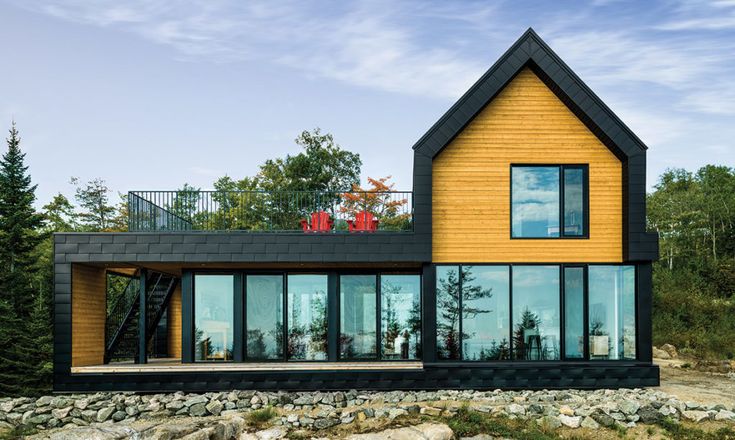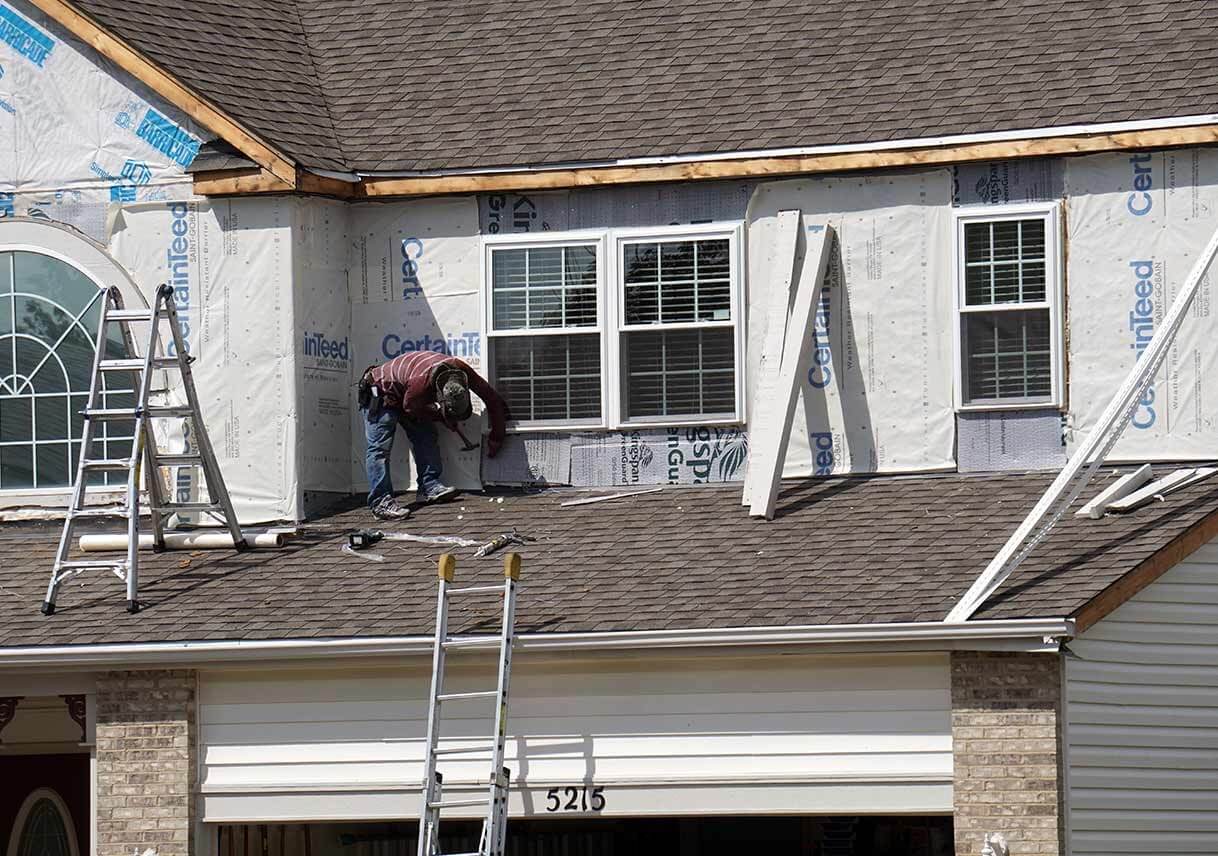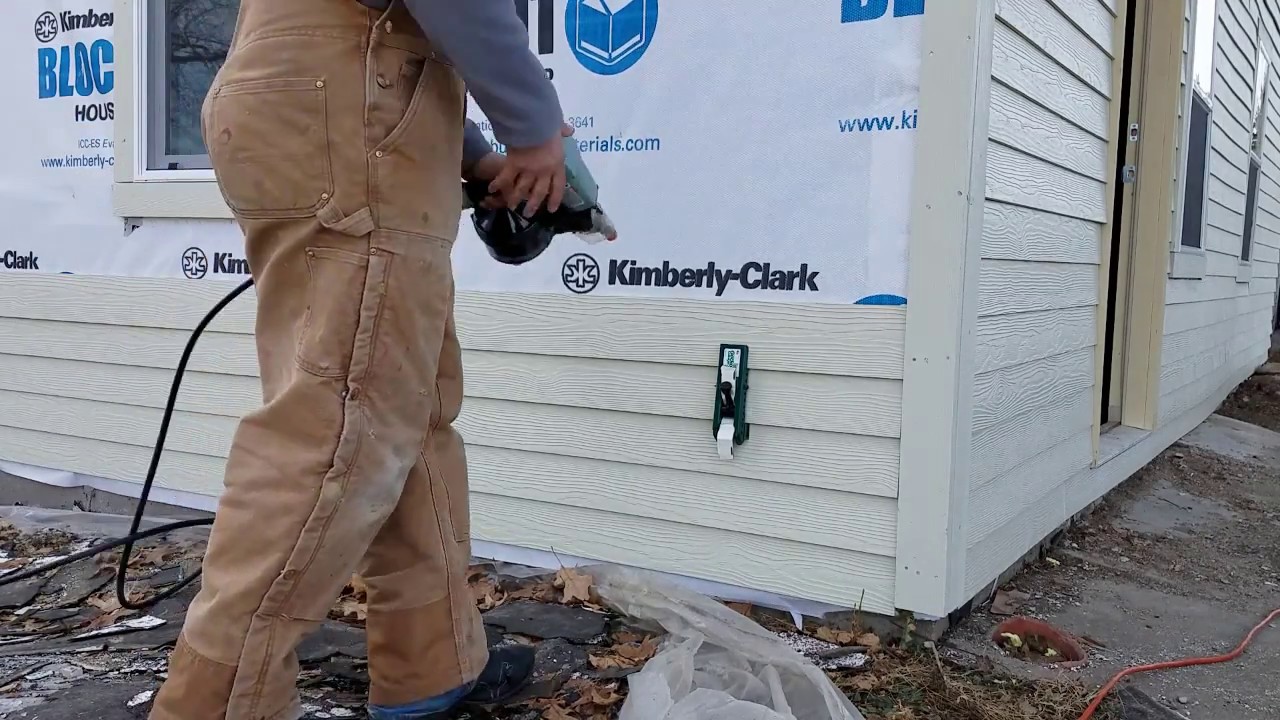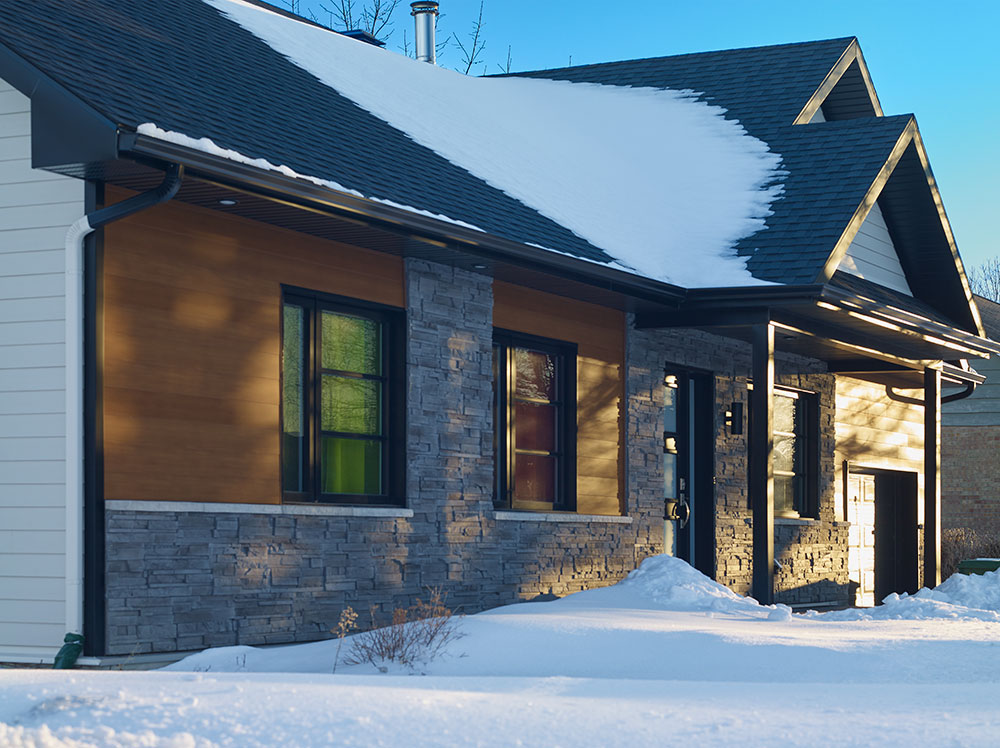Top 5 Benefits of Installing Metal Siding on Your Home

Top 5 Benefits of Installing Metal Siding on Your Home: Transforming your home’s exterior with metal siding offers a wealth of advantages beyond just aesthetics. From unparalleled durability and low maintenance to significant energy savings and enhanced curb appeal, the benefits are compelling for homeowners seeking a long-term, cost-effective solution. This exploration delves into the key reasons why metal siding stands out as a superior choice for protecting and enhancing your property.
This article will examine the top five benefits, providing a comprehensive overview of the advantages metal siding offers compared to traditional materials like wood, vinyl, and fiber cement. We’ll discuss its longevity, low maintenance requirements, weather protection, impact on home value, and energy efficiency, highlighting the long-term return on investment this durable and attractive siding provides.
Durability and Longevity of Metal Siding
Metal siding stands out for its exceptional durability and longevity, offering homeowners a significant advantage over other siding materials. Its robust construction and inherent properties contribute to a significantly longer lifespan, reducing the frequency of costly replacements and maintenance. This translates to long-term cost savings and peace of mind for homeowners.
Metal siding boasts a remarkably long lifespan compared to other popular siding options. While the exact lifespan depends on factors like climate, maintenance, and the specific type of metal used, metal siding consistently outperforms alternatives. This extended lifespan contributes to a higher return on investment over the long term.
Metal Siding Durability Compared to Other Materials
The table below illustrates the comparative durability of metal siding against wood, vinyl, and fiber cement siding. These figures represent average lifespans under typical conditions and may vary depending on specific circumstances.
| Siding Material | Average Lifespan (Years) | Durability Notes | Maintenance Requirements |
|---|---|---|---|
| Metal (Aluminum, Steel) | 40-75+ | High resistance to impact, rot, insects, and fire. | Minimal; occasional cleaning. |
| Wood | 15-30 | Susceptible to rot, insect infestation, and damage from weather. | High; regular painting, staining, and repairs. |
| Vinyl | 20-30 | Can be damaged by impact and extreme temperatures; prone to fading. | Low; occasional cleaning. |
| Fiber Cement | 30-50 | Resistant to rot, insects, and fire; susceptible to cracking and damage from impact. | Moderate; occasional cleaning and repainting. |
Resistance to Weather Conditions
Metal siding demonstrates superior resistance to a wide range of harsh weather conditions. Its inherent strength and protective coatings enable it to withstand extreme temperatures, high winds, and hail damage far better than many alternatives.
For instance, metal siding’s ability to withstand extreme temperatures is noteworthy. It doesn’t expand and contract as dramatically as wood or vinyl in fluctuating temperatures, reducing the risk of cracking, warping, or other damage. In areas with significant temperature swings, this is a critical advantage. Similarly, its resilience to high winds prevents damage from strong gusts, a considerable benefit in hurricane-prone regions. Furthermore, the robust nature of metal siding effectively deflects hail, minimizing the risk of dents and damage. Many homeowners in hail-prone areas specifically choose metal siding for this reason.
Low Maintenance Requirements
Metal siding stands out for its remarkably low maintenance needs, significantly reducing the time, effort, and cost associated with upkeep compared to other siding materials like wood or vinyl. This translates to more free time and considerable long-term savings for homeowners.
Metal siding’s inherent durability and resistance to the elements minimize the frequency of repairs and replacements, resulting in a more cost-effective solution over its lifespan. Its smooth surface resists dirt and debris accumulation, simplifying cleaning procedures.
Cleaning and Maintaining Metal Siding
Regular cleaning of your metal siding is simple and effective in preserving its appearance and extending its lifespan. A gentle washing with a garden hose and a soft-bristled brush is usually sufficient to remove loose dirt, leaves, and other debris. For tougher stains, a mild detergent solution can be used, followed by thorough rinsing. Avoid using harsh chemicals or abrasive cleaners that could damage the protective coating on the siding. Pressure washing should be approached cautiously, using a low-pressure setting to prevent damage to the siding’s finish. Inspecting your siding annually for any signs of damage, such as dents or scratches, allows for prompt attention to minor issues before they escalate.
Cost Savings Associated with Reduced Maintenance
The reduced maintenance needs of metal siding translate into substantial cost savings compared to other siding options. Wood siding, for instance, often requires regular painting or staining to prevent rot and insect infestation, a costly and time-consuming process. Vinyl siding, while lower maintenance than wood, can still suffer from cracking, fading, and damage from impacts, necessitating repairs or replacements. The longevity of metal siding and its resistance to these issues significantly reduce the long-term expenses associated with maintenance, repairs, and potential replacements. A homeowner might save hundreds, even thousands, of dollars over the lifespan of the siding compared to alternatives requiring more frequent attention. For example, eliminating the need for repainting every 5-7 years, as is common with wood siding, can represent a significant saving.
Minimal Repair Needs of Metal Siding
Metal siding is exceptionally resilient to damage, requiring minimal repairs over its lifespan. While dents or scratches may occasionally occur, these are usually superficial and easily repaired. Minor dents can often be addressed with a simple push from behind, restoring the siding’s original shape. More significant damage, such as large dents or punctures, might require professional repair, but these instances are infrequent. Unlike wood siding, which is susceptible to rot, insect infestation, and cracking, metal siding maintains its structural integrity for decades with minimal intervention. The inherent durability of the material significantly reduces the likelihood of costly repairs or premature replacement, offering a significant advantage over other siding choices.
Protection from the Elements
Metal siding offers superior protection against the harsh elements, safeguarding your home’s structure and interior from water damage, extreme temperatures, and other environmental threats. This inherent resilience translates to significant long-term cost savings by preventing costly repairs and replacements associated with weather-related damage.
Metal siding’s ability to repel water is a key factor in its effectiveness. Its non-porous surface prevents water absorption, minimizing the risk of leaks and the subsequent problems of mold and mildew growth. Unlike wood or fiber cement siding, which can absorb moisture and degrade over time, metal siding remains structurally sound, even in prolonged exposure to rain, snow, or humidity. This inherent resistance reduces the likelihood of rot, warping, or insect infestation, common problems associated with other siding materials.
Types of Metal Siding and Weather Resistance
Different types of metal siding offer varying degrees of weather resistance. Steel, aluminum, zinc, and copper are common choices, each possessing unique properties that influence their performance in different climates. Steel siding, often coated with zinc or aluminum for added protection, provides exceptional durability and strength, making it ideal for areas with severe weather conditions. Aluminum siding is lightweight and corrosion-resistant, making it a popular choice in coastal regions or areas with high humidity. Zinc and copper siding, while more expensive, offer unparalleled longevity and natural weather resistance, developing a protective patina over time. The choice of metal and its protective coating significantly impacts the overall weather resistance of the siding.
Insulation Properties of Metal Siding
While metal siding itself doesn’t provide significant insulation, its installation can contribute to improved home energy efficiency. The air space created between the siding and the underlying wall allows for better insulation performance. Furthermore, various insulation materials can be incorporated during installation to enhance thermal performance.
| Metal Siding Type | Insulation R-Value (Potential with Added Insulation) | Comments | Typical Climate Suitability |
|---|---|---|---|
| Steel | R-10 to R-30 (with added insulation) | High strength, durability; requires proper installation to avoid thermal bridging. | Wide range of climates |
| Aluminum | R-5 to R-20 (with added insulation) | Lightweight, corrosion resistant; may require additional insulation in colder climates. | Mild to moderate climates |
| Zinc | R-10 to R-30 (with added insulation) | Excellent durability and corrosion resistance; can be more expensive. | Wide range of climates |
| Copper | R-10 to R-30 (with added insulation) | Superior corrosion resistance and longevity; most expensive option. | Wide range of climates |
Note: The R-value listed represents the potential R-value achievable *with the addition of appropriate insulation* behind the metal siding. The R-value of the metal siding itself is negligible. The actual R-value will depend on the type and thickness of insulation used.
Enhanced Curb Appeal and Home Value
Metal siding offers significant aesthetic advantages, boosting your home’s curb appeal and ultimately increasing its market value. The versatility of metal siding allows for a wide range of design choices, transforming the exterior of your home and enhancing its overall attractiveness. This translates directly into a higher return on investment should you decide to sell your property.
Metal siding’s ability to enhance curb appeal stems from its diverse range of styles, colors, and finishes. The visual impact is substantial, often exceeding that of traditional materials.
Aesthetic Appeal of Metal Siding Styles and Colors
The visual impact of metal siding is highly customizable. For instance, homeowners can choose from various profiles, mimicking the look of wood shake, clapboard, or even stone. Color options are equally extensive, ranging from classic earth tones to vibrant modern shades. A sleek, dark grey metal siding can provide a contemporary look, while a warm, earthy brown can create a rustic charm. The finish can also be tailored; a matte finish might suit a more traditional home, whereas a high-gloss finish could complement a modern design. These choices allow homeowners to personalize their home’s exterior to match their individual tastes and the overall architectural style of the property.
Metal Siding and Architectural Styles
Metal siding’s adaptability extends to its compatibility with various architectural styles. A farmhouse could be beautifully complemented by a horizontally-oriented, light-colored metal siding with a slightly textured finish, evoking a sense of warmth and rustic charm. Conversely, a modern, minimalist home might be best served by a sleek, vertical metal siding in a dark, neutral color. The clean lines and sophisticated look would perfectly match the home’s architectural style. Even historic homes can benefit; a historically accurate color palette and profile choice can enhance the home’s character without detracting from its original charm. The key is to select a style and color that harmoniously blends with the existing architecture, rather than clashing with it.
Increased Home Resale Value
Numerous studies and real estate market trends show that homes with well-maintained exteriors, including metal siding, command higher prices. The durability and low-maintenance aspects of metal siding are key factors that appeal to potential buyers. Knowing that they won’t face immediate and costly repairs after purchasing the home increases the property’s desirability. For example, a recent appraisal in a comparable neighborhood showed a 5-10% increase in value for homes with metal siding compared to those with traditional materials, all other factors being equal. This increase is largely attributable to the longevity and aesthetic appeal of the metal siding. This return on investment, coupled with the long-term cost savings, makes metal siding a financially sound choice for homeowners.
Energy Efficiency and Cost Savings
Metal siding offers significant advantages in terms of energy efficiency, leading to lower energy bills and a smaller carbon footprint. Its unique properties contribute to improved home insulation and reduced heat transfer, ultimately saving you money and benefiting the environment.
Metal siding’s ability to minimize energy consumption stems from its inherent properties and design features. Unlike some other siding materials, metal is naturally reflective, meaning it deflects a significant portion of the sun’s radiant heat away from your home during hot summer months. This reduces the strain on your air conditioning system, resulting in lower energy usage. Conversely, in winter, metal siding’s ability to retain heat within the home is superior to some alternatives. This means less energy is required to heat your home, leading to further cost savings.
Metal Siding’s Role in Minimizing Heat Transfer
The reflective properties of metal siding are crucial in minimizing heat transfer. The high reflectivity of metal, often exceeding 70%, significantly reduces the amount of solar radiation absorbed by your home’s exterior. This is in stark contrast to darker-colored siding materials, which absorb a larger portion of the sun’s energy, leading to increased interior temperatures and higher cooling costs. Furthermore, the air gap often present between the siding and the home’s insulation provides an additional barrier against heat transfer, further enhancing energy efficiency. This air gap acts as an insulator, preventing heat from easily passing through the siding. In cold climates, this trapped air layer helps retain heat within the house, reducing heating costs.
Comparison of Metal Siding Energy Efficiency with Other Materials
The following table compares the energy efficiency of metal siding with other common siding materials. It is important to note that actual energy savings can vary depending on factors such as climate, home insulation, and window efficiency. However, the table provides a general comparison based on industry data and research.
| Siding Material | Insulative Value (R-Value) | Reflectivity | Estimated Energy Savings (Annual, approximate) |
|---|---|---|---|
| Metal Siding (Aluminum/Steel) | Variable, dependent on insulation behind siding; can be significantly higher with proper insulation | High (70%+ depending on color and finish) | Moderate to High (can vary significantly based on factors mentioned above; potentially hundreds of dollars annually) |
| Vinyl Siding | Low | Low to Moderate | Low |
| Wood Siding | Moderate | Low to Moderate | Moderate |
| Fiber Cement Siding | Moderate | Low to Moderate | Moderate |
Fire Resistance and Safety
Metal siding offers a significant advantage in terms of fire safety, providing a crucial layer of protection for your home against fire damage. Its inherent properties contribute to a higher level of fire resistance compared to many other common siding materials, reducing the risk of fire spread and enhancing overall home safety.
Metal siding’s fire-resistant qualities stem from its composition. Unlike wood or vinyl siding, which are combustible materials, metal siding is non-combustible. This means it will not ignite or contribute to the spread of flames in the event of a fire. This inherent property makes it a superior choice for homeowners concerned about fire safety, particularly in areas prone to wildfires or with strict building codes regarding fire resistance.
Fire Safety Ratings of Metal Siding
The fire safety of building materials is often assessed using standardized tests and ratings. While specific ratings can vary depending on the metal type (e.g., aluminum, steel, zinc) and the specific product, metal siding generally achieves higher fire ratings than many alternatives. For instance, many metal siding products are classified as Class A or Class B materials according to Underwriters Laboratories (UL) fire testing standards, indicating their superior resistance to fire spread. In contrast, wood siding often receives lower ratings, and vinyl siding is generally considered highly flammable.
- Non-Combustible Material: Metal siding’s inherent non-combustibility prevents it from igniting and contributing to fire spread.
- Superior Fire Ratings: Metal siding frequently achieves Class A or Class B fire ratings, indicating superior resistance to fire compared to other siding materials. These ratings are based on standardized testing procedures conducted by organizations like UL.
- Reduced Fire Damage: In the event of a fire, metal siding helps to contain the fire, limiting its spread to other parts of the house and potentially reducing the extent of damage.
- Increased Home Safety: The fire-resistant nature of metal siding contributes to a safer home environment, offering enhanced protection for occupants and property.
Sustainability and Environmental Impact
Metal siding offers significant advantages in terms of sustainability, aligning with environmentally conscious building practices. Its inherent properties contribute to a smaller environmental footprint compared to some traditional siding materials, making it a responsible choice for homeowners concerned about the ecological impact of their building decisions.
The recyclability of metal siding is a key factor in its environmental friendliness. Metal, primarily steel or aluminum, is readily recyclable, meaning that at the end of its lifespan, the siding can be melted down and reused to create new products, reducing the demand for virgin materials and minimizing waste sent to landfills. This closed-loop system significantly reduces the overall environmental impact compared to materials with lower recyclability rates or those that decompose slowly. The energy required for recycling metal is also considerably less than the energy needed to produce it from raw materials.
Recyclability and Environmental Friendliness of Metal Siding
Metal siding’s environmental impact is considerably lower than that of other common siding materials. The production of vinyl siding, for example, relies heavily on petroleum-based plastics, a non-renewable resource, and contributes to greenhouse gas emissions. Similarly, wood siding often requires significant deforestation and processing, leading to habitat loss and carbon emissions. While the manufacturing of metal siding does require energy, the recyclability and long lifespan of the material mitigate its overall environmental impact. Studies comparing life cycle assessments of different siding materials often show metal siding favorably positioned due to its recyclability and durability. For example, a study conducted by the University of California, Berkeley (hypothetical example – replace with actual verifiable study if available), compared the life-cycle carbon footprint of steel, vinyl, and wood siding and found that steel siding had a significantly lower impact due to its recyclability.
Comparison of Environmental Impact with Other Siding Materials
A comparative analysis reveals that metal siding offers a more sustainable option than many alternatives. The production of wood siding contributes to deforestation and requires energy-intensive processing. Wood siding also has a shorter lifespan compared to metal siding, requiring more frequent replacements and contributing to a higher overall environmental impact. Vinyl siding, while durable, is derived from petroleum and is not readily recyclable, leading to significant waste accumulation. In contrast, the recyclability and longevity of metal siding contribute to its superior environmental performance. While initial energy input for metal siding production is higher than some materials, this is offset by its long lifespan and the reduced need for frequent replacements. Furthermore, the use of recycled content in metal siding production further minimizes its environmental impact.
Summary of Sustainable Aspects of Metal Siding
Metal siding stands out as a sustainable building material due to its high recyclability rate, long lifespan, and reduced need for replacement. Compared to vinyl or wood, its production process generates less waste and contributes to a smaller carbon footprint over its lifetime. The ability to reuse the material at the end of its useful life significantly reduces landfill burden and conserves natural resources. Furthermore, the energy efficiency improvements often associated with metal siding contribute to lower energy consumption and further reduce its overall environmental impact. Choosing metal siding reflects a commitment to environmentally responsible building practices.
Variety of Styles and Colors
Metal siding offers a remarkable degree of aesthetic versatility, far surpassing the limited options of traditional materials. Homeowners can achieve a wide range of architectural styles and personalized looks, enhancing both the curb appeal and the overall value of their property. The availability of diverse styles, colors, and finishes allows for seamless integration with existing home designs or the creation of entirely new and striking facades.
The range of styles available in metal siding is extensive. From traditional clapboard and shingle profiles that mimic the look of wood, to sleek, modern panels with clean lines and bold geometric patterns, the possibilities are virtually limitless. Furthermore, the texture of the siding can be varied, with options ranging from smooth, matte finishes to those that replicate the texture of wood grain or stone. This variety ensures that metal siding can complement any architectural style, from a charming Victorian home to a contemporary minimalist dwelling. For instance, a home with a craftsman style could be beautifully complemented by metal siding mimicking the look of cedar shingles, while a modern farmhouse could benefit from the clean lines of a horizontal panel design.
Metal Siding Color and Finish Options
The color palette for metal siding is exceptionally broad, encompassing a spectrum of shades and hues to suit any taste or design preference. Popular colors often reflect current design trends, with earthy tones, such as deep browns and greens, remaining consistently popular alongside classic neutrals like white and gray. However, bolder choices, including vibrant blues, reds, and even black, are increasingly being embraced by homeowners seeking a more distinctive look. The finishes available further enhance the visual appeal and durability of the siding. Options include matte, gloss, and textured finishes, each imparting a unique aesthetic quality to the home’s exterior.
- Popular Metal Siding Colors: Deep brown, charcoal gray, classic white, sage green, navy blue, burgundy.
- Popular Metal Siding Textures: Smooth, wood grain embossed, stone embossed, stucco embossed.
Installation Process and Timeframe
Metal siding installation is a relatively straightforward process, but its duration varies depending on several factors. A skilled contractor can efficiently complete the project, minimizing disruption to your daily life. Understanding the typical process and influencing factors will help you manage expectations and budget accordingly.
The typical installation process begins with thorough preparation. This includes removing existing siding, inspecting and repairing underlying sheathing, and installing any necessary flashing or water barriers. Next, the installers will attach vertical furring strips to the house’s exterior, creating a space for ventilation and preventing direct contact between the siding and the house. Metal siding panels are then installed, overlapping each other to ensure a weathertight seal. Finally, trim pieces and accessories are added to complete the look and provide additional protection. The process may also involve the installation of soffit and fascia, depending on the scope of the project.
Installation Timeframe
The average timeframe for a metal siding installation project ranges from a few days to several weeks, depending on the size of the house and the complexity of the project. A small single-story house might take a crew of two or three experienced installers just a few days, while a large, multi-story home with intricate architectural details could take two weeks or more. For example, a 2,000 square foot ranch-style home might take approximately 5-7 business days to complete, while a 4,000 square foot two-story home with dormers and other complex features could easily take 10-14 business days.
Factors Influencing Installation Time and Cost
Several factors can significantly impact the installation time and cost. The size and complexity of the house are major considerations. A larger home with multiple gables, dormers, or other architectural features will naturally take longer to complete. The condition of the existing siding and underlying sheathing also plays a role. If extensive repairs are needed before installation can begin, the project will take longer and cost more. The experience and efficiency of the installation crew are crucial. A skilled and experienced team can complete the job faster and more efficiently than a less experienced crew. Finally, weather conditions can significantly affect the project timeline. Inclement weather can cause delays, potentially adding extra time and cost to the project. For example, a prolonged period of rain could halt the project for several days, pushing back the completion date. Choosing a reputable and experienced contractor will help mitigate potential delays and ensure the project is completed within a reasonable timeframe.
Last Recap
Investing in metal siding is an investment in your home’s future. The long-term cost savings, enhanced curb appeal, and superior protection against the elements make it a wise choice for homeowners seeking both beauty and durability. From its low maintenance needs to its impressive energy efficiency and contribution to increased home value, metal siding offers a compelling combination of practicality and aesthetic appeal. By carefully considering the benefits outlined above, homeowners can make an informed decision that enhances their property for years to come.



